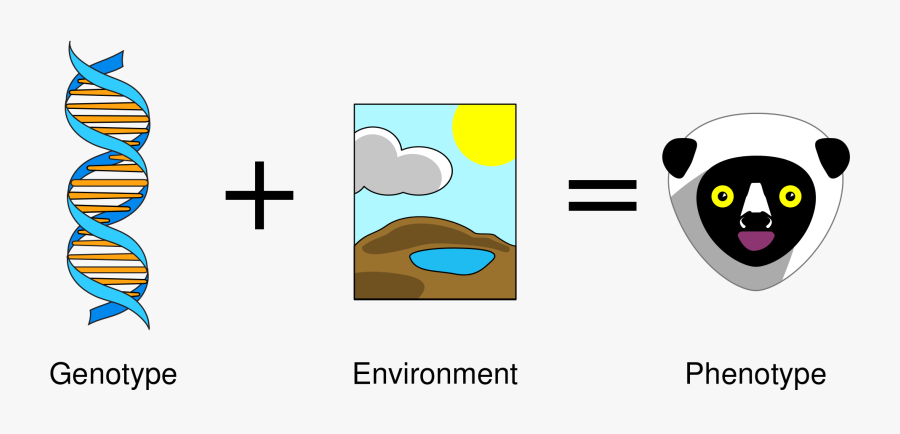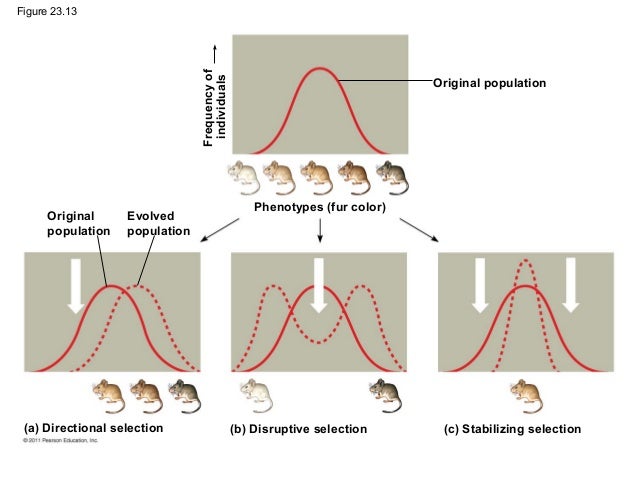Below is a video of what I consider to be one of the scariest things on the Internet. The video is of a study that shows how a species of E. coli bacteria gains antibiotic resistance.
So, how did the bacteria go from no antibiotic resistance to antibiotic resistance in eleven days? The simple answer is: it evolved. However, the simple answer does not tell us how the bacteria evolved. To learn how it evolved, you need to know what and how the sources of evolution work.
A Quick Genetics Lesson
Your genes code for proteins that may all of your traits.
What about the color of my hair?
Yep, there are genes for that.
What about my ability to roll my tongue into a taco?
Yep, there’s a gene for that.
What about my love of tacos?
Yep, there are most likely genes for that.
What about my ability to telepathically control an army of alpacas that will help me become the leader of Bakersfield?
Yep. . . Wait. What? Well, some genes control the growth of neurons that produce ideas. So, I’d say yes to the thought and no to the mind-controlling alpaca thing.
So, no Supreme Leader Maynard?

The genes that code for a trait are your genotype, and the trait is your phenotype. A change to an organism’s genotype may affect the phenotype of an organism. Also, the environment may alter an organism’s phenotype as well. For example, our hair color is darker in the winter and lighter in the summer. If your hair color is brown, your hair cells produce more melanin (a pigment) than those with lighter hair. However, if you spend your summer days outdoors, the UV radiation will break down the melanin, lightening your hair. Therefore, your genetics and the environment affect your phenotypes (traits).
| This is an Example of How Genes (Genotype) Code for an Organism’s Traits (Phenotype) | This is an Example of How the Genotype and the Environment Affects Phenotypes (traits) | This is what Led to the Maynard Dynasty |
|---|---|---|
 |  |  |
Mutation
Bacteria primarily reproduce asexually. Asexual reproduction is when an organism makes a genetic clone of itself. For example, a single bacterium will divide and create two genetically identical cells. The two new bacteria divide, producing a net total of four clones. The four bacteria divide, making a net total of eight clones. The bacteria will continue exponential growth until it reaches its carrying capacity or exhausts its resources.


Cell division is a complex process where there can be no mistakes in making clones (genetically identical cells). But, no process is perfect, and mistakes occur in the copying of the DNA. The errors in the DNA during the copying process are mutations. Mutations are random events that directly affect an organism’s genotype and may indirectly affect its phenotype. Most mutations will be benign – meaning they will not affect the cloned organism. However, mutations that affect the code of a gene or genes in the copied DNA can profoundly affect the cloned cells. Most gene mutations that affect an organism’s traits are harmful, making it less likely that the organism will survive and reproduce. However, in rare events, a beneficial mutation produces a trait that gives the organism an advantage in the environment.


Wait. Didn’t you explain that mutations are random and beneficial mutations are rare?
Yes, I did.
Then how did the bacteria produce so many beneficial mutations (mutations that allowed it to survive in the antibiotic) in just eleven days?
Great question.
Thank you.
Well, mutations that affect offspring must occur during reproduction or gamete production (sperm and eggs). Complex animals such as humans produce few children and at least two decades separate generations. Therefore, it takes thousands of years for the likelihood of a beneficial mutation to occur. For example, the sun’s UV radiation converts cholesterol in our skin into vitamin D. We need vitamin D to extract calcium from food. However, UV radiation also causes mutations that can lead to cancer. The first humans had dark skin, a benefit in sun-intensive Eastern Africa. Dark skin gives a person more protection from harmful UV radion, and prolonged exposure to the sun increases vitamin D production. Some humans were born with lighter skin but usually did not live as long because they were more prone to skin cancer.
However, as humans migrated into areas with less sun exposure, such as Northern Europe, dark skin became a disadvantage, and light skin became an advantage. Humans with lighter skin could produce more vitamin D in low sun-intensive Northern Europe, while those with darker skin could not. Therefore, over thousands of years, the skin pigmentation in Europeans slowly got lighter. However, the humans that remained in Africa or immigrated to sun-intensive Southern Asia and Australia maintained their darker skin. (Those with lighter skin have the same genes as those with darker skin. The only difference is the cells in light-skinned individuals make less pigment than those with darker skin.)

It took about 150 thousand years for Northern Europeans’ skin to evolve into a lighter pigmentation because humans produce small litters, and there are decades between generations. However, bacteria reproduce rapidly, where one bacterium can spawn millions of bacteria within a day. Since bacteria have a rapid reproduction rate and produce many more offspring than humans, beneficial mutations become more likely in a shorter period. Therefore, it takes tens of thousands of years to make the same amount of offspring that bacteria can do in a matter of days. (Plus, human cells are better at correcting mutations than bacteria.)
A Quick Summary of Mutations
- Mutations are random events.
- Mutations are neither good nor bad; they can be benign (harmless), harmful, or helpful.
- An organism will not gain a beneficial mutation if it needs it because mutations are random.
- Only mutations that occur in sex cells (sperm and eggs) are inherited.
Natural Selection
Darwin observed that many species often reproduce and have large litters. He saw this as critical since only a few, if any, of the offspring would survive in the wild. But those who survive long enough to reproduce usually have an adaptive advantage over those who perish. Darwin called the ability to survive and reproduce fitness. The more fit an organism is in its environment, the more likely it will survive and reproduce.
Natural selection is a NONRANDOM process where the ENVIRONMENT selects which phenotypes have higher fitness. Natural selection is NOT random because the environment selects the traits with an adaptive advantage (higher fitness). For example, humans have lungs, which allow us to use oxygen gas in the air. Fish have gills, which allow them to extract oxygen gas dissolved in water. However, lungs do not work underwater, and gills do not work above water. Therefore, the lungs give us an adaptive advantage on land over fish, but fish have an adaptive advantage underwater.

So it is the environment that selects which phenotypes (traits) have an adaptive advantage and which phenotypes do not. And the environment is in flux, so an advantageous trait may become a disadvantage and vice versa. For example, a thousand years ago, there was only light-colored sand in the New Mexico desert. The rock pocket mouse is prey to visual predators, like hawks and owls. Mice with light fur had an adaptive advantage over dark-fur mice because they blended in with their surroundings; therefore, almost all mice were light-furred. A brief volcanic eruption covered some of the New Mexico deserts with dark lava rock. The light-furred mice were now at a disadvantage on the dark rock because hawks and owls could easily spot them. Conversely, the dark-furred mice blend in with the lava rocks and are difficult to see. Thus, almost all of the mice on the lava rocks are dark-furred.
So, the environment (the predators) selects which phenotype (fur color) has an advantage?
Yep. You’ve got it.

The Four Steps of Natural Selection
#1 Variation Within a Population
Natural selection acts on phenotypes. If a population has no variation, then there is a good chance of going extinct when the environment changes. Species with a lot of variety are less likely to go extinct. For example, birds with narrow beaks can drink flower nectar but cannot eat seeds. If only birds with narrow beaks lived on an island, and the flowers disappeared, but the seeds did not, then the bird population would go extinct. However, if there were blunt-beaked birds (who can eat seeds) and narrow-beak birds, the population would survive in the changing environment.
#2 Environmental Pressure or Change
For change to happen, there must be an environmental pressure called selection pressure. The birds’ selection pressure was the drought, which led to a change in the food source.
#3 Fitness
Members within a population with higher fitness are more likely to survive and reproduce because they have an adaptive advantage. For example, birds with larger beaks are more likely to survive the drought because they can open tough, drought-tolerant seeds.
#4 Reproduction
The primary goal of all species is to survive long enough to reproduce. Organisms with traits that give them an adaptive advantage (higher fitness) are more likely to survive and reproduce. During the island’s drought, the flowers wilted, and seeds became the only food source for the birds. The birds with bigger beaks are more likely to survive and reproduce because they can eat seeds.
#5 Change in the Trait Over Time
Since only the large-beaked birds can eat the seeds, they will survive and reproduce, while the small-beaked birds will not. Therefore, most of the birds born will have large beaks.

A Quick Summary of Natural Selection
- Natural selection is a nonrandom process.
- Natural selection acts on an organism’s phenotype.
- The environment selects the fitness of an organism’s phenotypes.
What is a Histogram?
You want to make a histogram when looking at quantitative data and the frequency in which that data occurs. Histograms look similar to column/bar graphs, but there are some notable differences. A bar graph can have either qualitative or quantitative data on the x-axis, and there is a separation between each bar/column. Histograms only have quantitative data on the x-axis, and there are no spaces between each column/bar. Also, histograms look at the frequency a particular quantity appears.
A histogram should include labels and units on the x-axis and y-axis, the x-axis and y-axis adjusted to the right scale, and a title that briefly describes the graphed data. A legend (key) may or may not be needed.

Trends in Natural Selection
Natural selection usually results in three types of trends, which are graphed using a histogram.
Directional Selection
Directional selection occurs when a selection pressure favors one end of a trait’s spectrum. The rock pocket mice are an example of directional selection. The mice on the lava rocks all have dark fur because visual predators (hawks and owls) can easily spot light-furred mice. Conversely, the light desert sand is home to light-furred mice because they are more difficult to spot than dark-furred mice.
Stabilizing Selection
Stabilizing selection occurs when the trait in the middle of a trait’s spectrum has an advantage. Rock pocket mice can be born with brown fur too. Brown mice have higher fitness in regions where the environment is brownish than dark-furred and light-furred mice. Therefore, the brown-furred mice have the adaptive advantage, and most that survive and reproduce are brown.
Disruptive Selection
Disruptive selection occurs when both ends of a trait’s spectrum have higher fitness than the trait in the middle. In the New Mexico desert, almost all mice are light-furred or dark-furred. Brown mice are also born, but few survive because they cannot hide on the rocks or sand; therefore, they are selected against in both environments (lower fitness).
